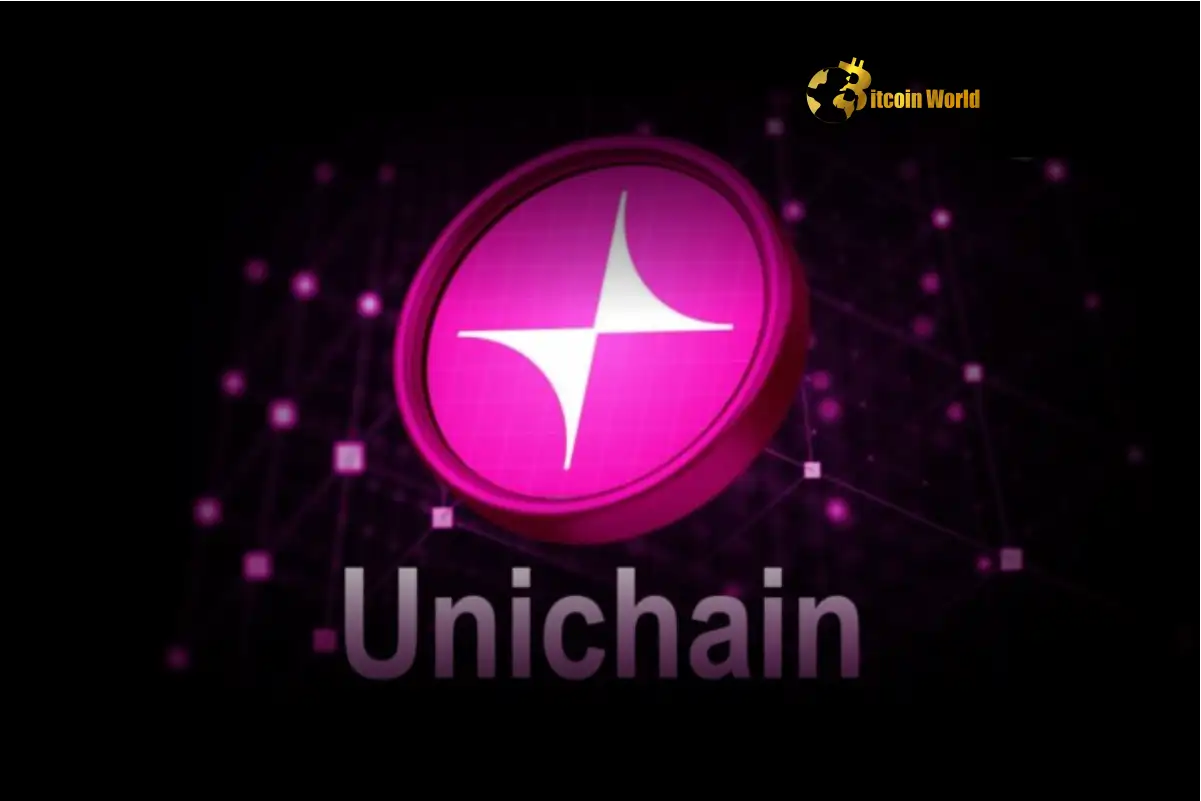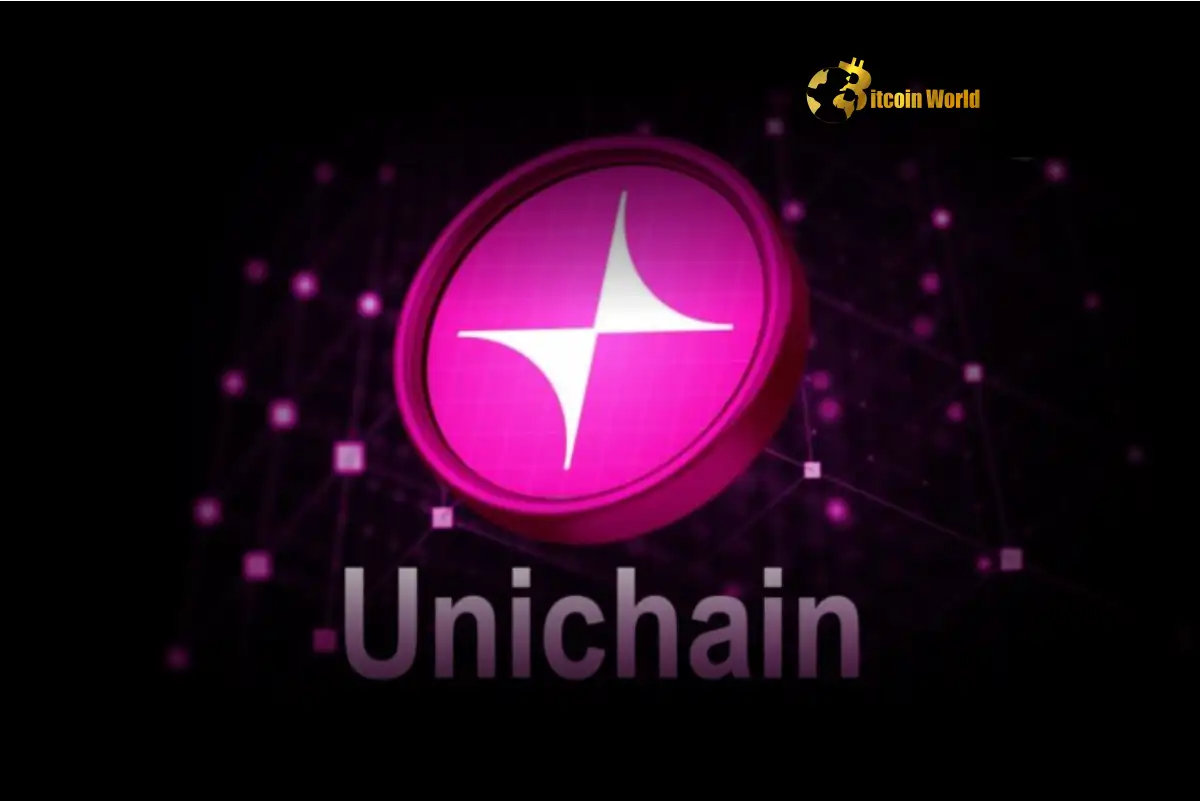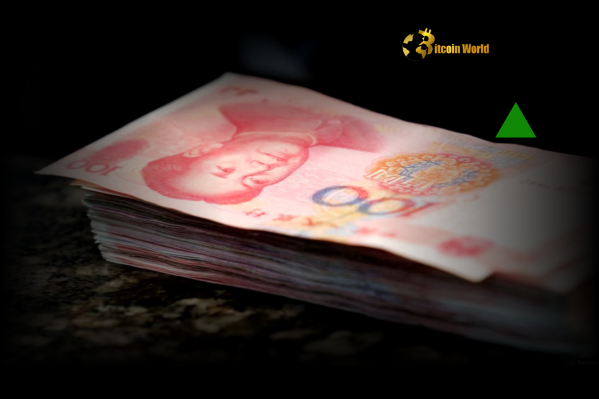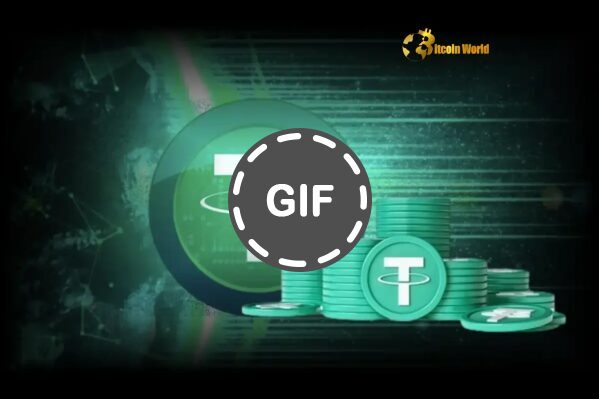Get ready for some eye-opening news from the world of decentralized finance (DeFi)! A significant shift is underway on one of the most crucial platforms in crypto: Uniswap. Specifically, on its latest iteration, Uniswap v4. Data is showing that Unichain, the dedicated layer-2 blockchain built specifically for Uniswap, has achieved a remarkable milestone by dramatically outpacing Ethereum in terms of Transaction Volume on this new version of the protocol.
What’s Happening with Uniswap v4 Transaction Volume?
The big headline, initially reported by The Block and backed by data from Dune Analytics, is clear: Unichain is now the dominant force driving activity on Uniswap v4. While Uniswap has historically been synonymous with Ethereum’s mainnet, the landscape is rapidly evolving.
According to the latest figures:
- Unichain currently accounts for approximately 75% of all transaction activity occurring on Uniswap v4.
- Ethereum’s share of this volume has dropped significantly, falling to below 20%.
- This indicates a rapid migration or preference for using Uniswap v4 on its native layer-2 solution rather than directly on Ethereum’s mainnet.
This isn’t just a minor fluctuation; it’s a profound change in user behavior and platform utilization on a cutting-edge DeFi protocol.
Why is Unichain Leading the Charge on v4?
To understand Unichain’s sudden dominance, we need to look at what Unichain is and why Layer 2 solutions are becoming increasingly vital in the crypto space.
Unichain is designed as a native Layer 2 scaling solution specifically tailored for Uniswap. Think of it as a dedicated express lane built just for Uniswap transactions, running alongside the main Ethereum highway. Layer 2 solutions process transactions off the main blockchain (Layer 1, in this case, Ethereum) but periodically settle them back onto Layer 1, inheriting its security properties.
The primary benefits driving users towards Layer 2s like Unichain are:
- Lower Transaction Fees: This is perhaps the most significant factor. Transacting on Ethereum’s mainnet, especially during periods of high network congestion, can incur substantial gas fees. Layer 2s bundle multiple transactions off-chain, spreading the cost across many users when settling on Layer 1, resulting in drastically reduced fees per transaction.
- Faster Transaction Speeds: Processing transactions off-chain allows for much quicker confirmation times compared to waiting for blocks to be mined and confirmed on Ethereum L1.
- Increased Throughput: Layer 2s can handle a much higher volume of transactions per second than Ethereum L1, making protocols more scalable and responsive.
For a high-frequency activity like decentralized exchange trading on Uniswap v4, these benefits are paramount. Users are naturally gravitating towards the platform version that offers a cheaper and faster experience.
What Does This Mean for Ethereum and DeFi?
While Unichain surpassing Ethereum in Uniswap v4 Transaction Volume might sound like bad news for Ethereum, it’s actually a testament to Ethereum’s foundational strength and the success of its scaling roadmap.
Ethereum was designed to be the secure, decentralized base layer. It was never intended for every single micro-transaction in the ecosystem to occur directly on Layer 1 forever. The vision has always included Layer 2 scaling solutions to handle the bulk of the transaction load while relying on Ethereum for final settlement and security.
This shift shows that:
- The Layer 2 Thesis is Validated: The fact that users are adopting a Layer 2 for a major protocol like Uniswap v4 proves that Layer 2s are effective and necessary for scaling DeFi.
- Ethereum Remains the Security Anchor: Unichain, as a Layer 2 rollup, relies on Ethereum’s security and decentralization. Ethereum’s role as the ultimate settlement layer is reinforced.
- DeFi is Evolving: DeFi is moving towards a multi-layer architecture where different layers serve different purposes – L1 for security and settlement, L2s for execution and scale.
So, while Ethereum L1’s direct share of Uniswap v4 volume is shrinking, its importance as the bedrock of the ecosystem remains unchallenged. This is not a zero-sum game; it’s ecosystem growth and specialization.
Exploring Unichain’s Growing Significance
Beyond transaction volume, Unichain is also building significant value within its ecosystem. According to data from DeFiLlama, Unichain’s Total Value Locked (TVL) currently stands at approximately $800 million. TVL represents the total value of crypto assets locked within the protocol, often indicating user trust and adoption.
This $800 million TVL places Unichain as the third-largest layer-2 rollup by TVL. This is a strong indicator that users aren’t just making quick trades; they are also depositing and holding assets within the Unichain environment to participate in liquidity provision and other DeFi activities on Uniswap v4.
Comparing Unichain’s TVL to its volume dominance highlights an interesting point: it’s achieving massive volume relative to its locked value, suggesting efficient capital use or potentially a focus on high-frequency trading activity facilitated by the lower costs.
What are the Benefits of Using Unichain for Uniswap v4?
For the average user or developer, the benefits of this shift are tangible:
- Cost Savings: Trading, swapping, and providing liquidity on Uniswap v4 via Unichain is significantly cheaper than on Ethereum L1. This makes DeFi more accessible to users with smaller capital.
- Improved User Experience: Faster transactions mean less waiting and a smoother trading experience.
- Enabling New Use Cases: Lower costs and higher speeds can potentially enable new types of applications or trading strategies that were economically unfeasible on Ethereum L1 due to gas costs.
- Focus on Uniswap: As a native Layer 2, Unichain is optimized specifically for the Uniswap protocol, potentially leading to tighter integration and performance enhancements unique to v4 features like ‘hooks’.
This move towards Unichain on v4 represents a practical improvement for those actively using the protocol.
Are There Any Challenges or Considerations with This Shift?
While the benefits are clear, it’s important to consider potential challenges or nuances:
- Bridging Assets: Users need to bridge their assets from Ethereum L1 (or other chains/L2s) to Unichain to use Uniswap v4 on it. This adds an extra step and can sometimes involve bridging fees and withdrawal delays, depending on the rollup type.
- Ecosystem Maturity: While growing rapidly, the Unichain ecosystem is still younger than the established Ethereum L1 DeFi ecosystem. Users might need to ensure the specific tokens or pairs they are interested in are available and liquid on Unichain.
- Reliance on Ethereum: As a Layer 2, Unichain’s security ultimately relies on Ethereum’s security. While this is a strength, any hypothetical issues with Ethereum L1 could impact Unichain.
- Centralization Risks (Potential): Some Layer 2s have varying degrees of decentralization in their early stages (e.g., centralized sequencers). Users should understand the specific architecture of Unichain and its path towards further decentralization.
These are typical considerations when adopting any new Layer 2 solution, and users should always do their own research.
Actionable Insights for Users and Investors
What should you take away from Unichain’s surge in Transaction Volume on Uniswap v4?
- Explore Uniswap v4 on Unichain: If you are a frequent Uniswap user, especially for trading or liquidity provision, investigate using v4 directly on Unichain to benefit from lower fees and faster speeds.
- Understand the L2 Landscape: This event highlights the growing importance of Layer 2s. Pay attention to other major protocols launching or adopting their own Layer 2s or integrating with existing ones.
- Recognize Application-Specific Rollups: Unichain is an example of an application-specific Layer 2 (or app-chain rollup). This trend might continue as protocols seek dedicated environments optimized for their needs.
- Ethereum’s Evolving Role: Don’t view this as Ethereum’s decline. View it as Ethereum’s successful evolution into a robust settlement and security layer supporting a multi-chain/multi-layer future.
Staying informed about these shifts is crucial for navigating the dynamic DeFi space.
Conclusion: A New Era for Uniswap and Layer 2s
The data showing Unichain handling the vast majority of Uniswap v4 Transaction Volume, while Ethereum‘s share dips below 20%, marks a pivotal moment. It unequivocally demonstrates the power and necessity of Layer 2 scaling solutions for popular DeFi applications. Unichain’s rapid ascent to become the third-largest Layer 2 by TVL further solidifies its position as a major player.
This isn’t just a technical footnote; it’s a practical change that impacts user costs, transaction speeds, and the overall accessibility of decentralized exchange. As Uniswap v4 adoption grows, Unichain is positioned to be the primary engine driving that growth, proving that the future of DeFi is increasingly being built and executed on Layer 2.
To learn more about the latest crypto market trends, explore our article on key developments shaping Ethereum Layer 2 adoption.






